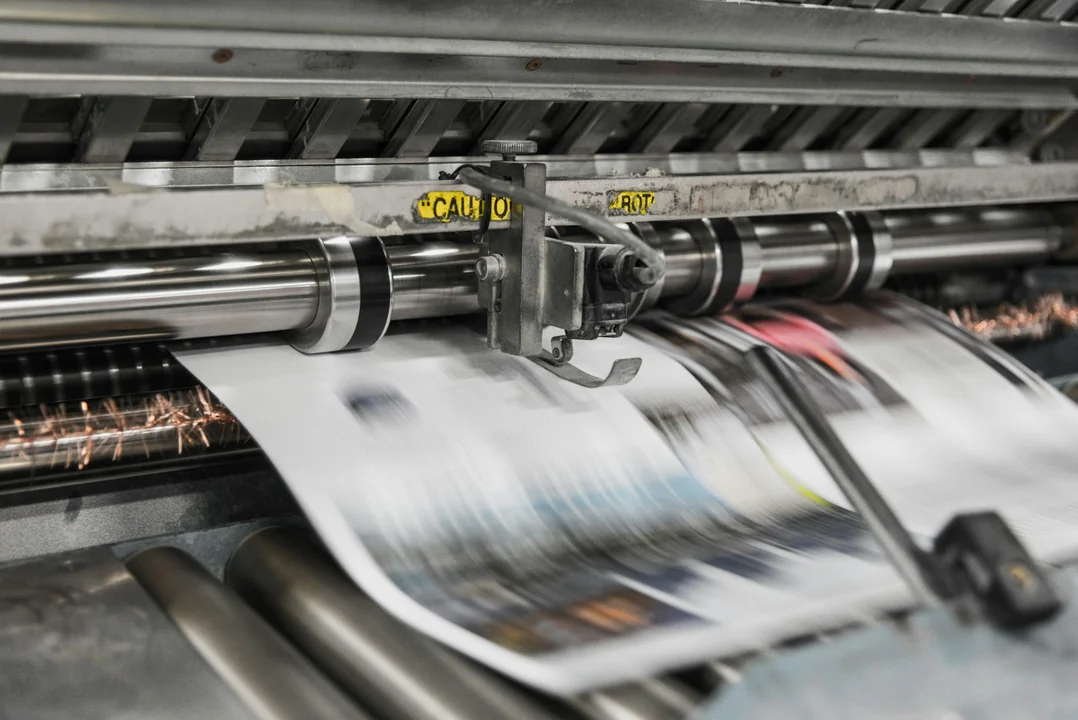Introduction
In the bustling world of office operations, the selection of office printers holds a pivotal role in ensuring smooth workflow and cost-efficient productivity. However, beneath the surface of the initial purchase price lies a critical aspect that often goes unnoticed – the Total Cost of Ownership (TCO) for office printers. Understanding the TCO of office printers is not merely about the upfront expenses; it involves a comprehensive evaluation of all costs associated with owning and operating a printer throughout its lifecycle.
This article delves deep into the realm of TCO for office printers, shedding light on the hidden costs, potential savings, and essential calculations that businesses need to consider. Whether you are a small business owner looking to optimize printing expenses or a procurement manager seeking to make informed decisions, this guide is tailored to equip you with the knowledge and insights necessary to navigate the intricate landscape of office printer TCO effectively.
Factors Affecting TCO
When it comes to evaluating the Total Cost of Ownership for office printers, several key factors come into play, each exerting a significant influence on the overall cost implications. The initial purchase price, while a crucial consideration, is just the tip of the iceberg. Maintenance and service costs, encompassing routine upkeep and repair expenses, can often accumulate over time, impacting the TCO substantially. Additionally, the expenses related to consumables and supplies, such as ink cartridges and paper, contribute significantly to the operational costs of office printers.
Energy consumption is another critical factor that businesses need to account for, as inefficient energy usage can lead to inflated electricity bills and environmental repercussions. Moreover, downtime and productivity loss due to printer malfunctions or maintenance can result in hidden costs that may not be immediately apparent but can have a substantial impact on the overall TCO of office printers. By understanding and addressing these factors comprehensively, businesses can gain a holistic perspective on the true cost implications of their printer investments, enabling them to make informed decisions that align with their budgetary and operational requirements.
Calculating TCO
Calculating the Total Cost of Ownership for office printers involves a systematic approach that goes beyond simple arithmetic. By employing a well-defined formula that takes into account all cost components, businesses can gain a clear understanding of the financial implications associated with their printer fleet. The TCO calculation typically involves summing up the initial purchase price, ongoing maintenance and service costs, consumables expenses, energy consumption charges, and the potential costs incurred due to downtime and productivity loss.
By quantifying these factors and projecting them over the printer’s expected lifespan, organisations can obtain a comprehensive TCO figure that reflects the true cost of owning and operating their office printers. It is essential to conduct TCO calculations for different printer models or configurations to compare costs effectively and make informed decisions based on financial prudence and operational efficiency.
Hidden Costs of Office Printers
Beneath the surface of seemingly straightforward office printer expenses lie a myriad of hidden costs that can catch businesses off guard if left unaddressed. One common pitfall is overlooking maintenance costs, which, if neglected, can escalate into major repair expenses and downtime, disrupting workflow and incurring additional costs. Inefficient energy usage by printers can also result in hidden costs, as energy-efficient models not only reduce electricity bills but also contribute to environmental sustainability. Unplanned repairs and downtime due to technical issues or part failures can lead to unexpected expenses that impact the overall TCO of office printers.
Upgrades and compatibility issues, such as software updates or hardware enhancements, can introduce additional costs that businesses need to factor into their TCO calculations. By proactively identifying and mitigating these hidden costs, organisations can streamline their printer operations and optimise cost efficiencies for long-term sustainability and profitability.
Strategies for Reducing TCO
In the quest to minimise the Total Cost of Ownership for office printers, businesses can implement strategic measures that not only cut down on expenses but also enhance operational efficiency. Choosing energy-efficient printers that bear the ENERGY STAR label can significantly reduce energy consumption and lower electricity costs over time. Implementing managed print services, which involve outsourcing printer management and maintenance to a third-party provider, can streamline printing operations, reduce downtime, and optimise resource allocation.
Regular maintenance and servicing of office printers, including cleaning, inspection, and timely repairs, can prolong the lifespan of the devices and prevent costly breakdowns. Opting for cost-effective consumables, such as high-yield cartridges and recycled paper, can also contribute to cost savings and environmental sustainability. By adopting these proactive strategies, businesses can proactively manage their printer-related expenses and enhance the overall cost-effectiveness of their printing infrastructure.
Benefits of TCO Analysis
The practice of conducting a thorough Total Cost of Ownership analysis for office printers offers a multitude of benefits that extend beyond mere cost considerations. By delving into the intricacies of TCO, businesses can unlock long-term cost savings that result from informed decision-making and strategic investments in printer technology. Understanding the complete cost picture allows organisations to identify areas where cost efficiencies can be maximised, leading to improved financial performance and sustainable operations. Moreover, by factoring in all cost components, including maintenance, consumables, and energy usage, businesses can streamline their budgeting processes and allocate resources more effectively, thereby enhancing overall operational efficiency.
TCO analysis enables businesses to make data-driven decisions regarding printer investments, ensuring that every purchase aligns with the organisation’s financial objectives and operational needs. In essence, the benefits of TCO analysis extend far beyond immediate cost savings, empowering businesses to optimise their printing infrastructure for long-term success and profitability.
Case Studies
Real-world case studies provide valuable insights into the practical application of Total Cost of Ownership analysis in the realm of office printers. By examining specific scenarios where TCO considerations have influenced decision-making processes, businesses can gain a deeper understanding of the tangible benefits that stem from a comprehensive cost evaluation approach. Comparing TCO for different printer models or brands can shed light on the potential cost differentials and performance implications, enabling organisations to make informed choices that align with their budget constraints and operational requirements.
Through the lens of real-life examples, businesses can glean valuable lessons on how to leverage TCO analysis to drive cost efficiencies, enhance productivity, and make strategic investments that yield long-term returns. By exploring these case studies, organisations can glean practical insights that inform their printer procurement strategies and optimise their printing operations for maximum cost-effectiveness and operational excellence.
ROI of TCO Analysis
The Return on Investment (ROI) of Total Cost of Ownership analysis for office printers transcends mere financial gains, encompassing a spectrum of benefits that contribute to overall business success. By investing time and resources in conducting TCO analyses, businesses can reap substantial returns in the form of cost savings, operational efficiencies, and enhanced productivity. The insights derived from TCO evaluations enable organisations to make strategic decisions that not only minimise costs but also maximise the value derived from their printer investments.
Through a comprehensive understanding of the complete cost landscape, businesses can identify opportunities for optimisation, implement targeted cost-saving measures, and align their printer fleet with their operational goals. The ROI of TCO analysis extends beyond immediate financial gains, fostering a culture of cost-consciousness, data-driven decision-making, and continuous improvement within the organisation. Ultimately, the ROI of TCO analysis lies in its ability to drive sustainable cost efficiencies, improve operational performance, and position businesses for long-term success in a competitive landscape.
Future Trends in Office Printers TCO
As technology continues to evolve at a rapid pace, the future landscape of Total Cost of Ownership for office printers is poised for significant transformations. Advancements in printer technology, such as the proliferation of cloud-based printing solutions, IoT integration, and artificial intelligence, are reshaping the way businesses evaluate and manage the TCO of their printer fleet. The integration of sustainability metrics into TCO calculations, including carbon footprint assessments and environmental impact analyses, is becoming increasingly prevalent as businesses strive to align their printing practices with eco-friendly initiatives.
The shift towards subscription-based printing models and managed print services is revolutionising the way organisations approach printer procurement and management, offering cost-effective solutions that enhance operational efficiency and flexibility. By staying abreast of these future trends and embracing innovative TCO methodologies, businesses can position themselves at the forefront of cost-effective printing practices, driving sustainability, performance, and profitability in the digital age.
Conclusion
In the realm of office operations, where efficiency and cost-effectiveness reign supreme, understanding the Total Cost of Ownership (TCO) for office printers emerges as a critical imperative for businesses seeking to optimise their printing infrastructure. Through a comprehensive evaluation of the various cost components, from initial purchase prices to maintenance expenses and energy consumption, organisations can gain a holistic view of the financial implications associated with their printer fleet. By delving into the intricacies of TCO analysis, businesses can uncover hidden costs, identify potential savings opportunities, and make informed decisions that align with their budgetary constraints and operational objectives.
The benefits of TCO analysis extend far beyond immediate cost considerations, encompassing improved operational efficiency, enhanced productivity, and strategic decision-making that drives long-term success. By leveraging TCO analysis as a guiding principle in printer procurement and management, businesses can navigate the complex terrain of office printer costs with confidence and clarity. From implementing cost-saving strategies to embracing future trends in TCO methodologies, organisations can position themselves for sustainable cost efficiencies and operational excellence in an ever-evolving business landscape.
FAQs on Total Cost of Ownership for Office Printers
What are the common hidden costs associated with office printers?
Hidden costs associated with office printers often include overlooked maintenance expenses, inefficient energy usage leading to high electricity bills, unplanned repairs causing downtime and productivity loss, and potential costs related to upgrades and compatibility issues.
How can regular maintenance help in reducing TCO for office printers?
Regular maintenance, including cleaning, inspection, and timely repairs, can prevent major breakdowns, prolong the lifespan of office printers, reduce the need for costly repairs, and minimise downtime, ultimately contributing to lower TCO.
How does energy efficiency contribute to lowering TCO for office printers?
Energy-efficient office printers consume less electricity, resulting in reduced energy costs over time. By opting for energy-efficient models and practices, businesses can lower their operational expenses, enhance sustainability efforts, and decrease the environmental impact of printing operations.
What role does printer lifecycle play in TCO analysis?
The printer lifecycle, encompassing the expected lifespan of a printer and its associated maintenance and repair costs over time, is a crucial factor in TCO analysis. Considering the lifecycle of office printers helps businesses forecast long-term costs, plan for upgrades or replacements, and make informed decisions regarding printer investments.




